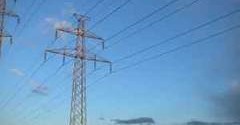Is it just the end of the buying season or are home sales hitting a wall?
A growing consensus of economists foresees a flattening in sales growth—or even year-over-year declines in the months to come-for the balance of the year and even into next year. Sales may have reached a ceiling for the season.
A combination of rising prices, slow economic growth and chronically short inventories are outflanking mortgage interest rates that still above near historic lows to put am an early damper on the 2016 selling season.
The latest evidence that sales are off is today’s news from NAR: July existing-home sales decreased on a year-over-year basis for the first time since November 2015. Total existing-home sales fell 3.2 percent to a seasonally adjusted annual rate of 5.39 million in July from 5.57 million in June. For only the second time in the last 21 months, sales are now below (1.6 percent) a year ago (5.48 million). Only the West region saw a monthly increase in closings in July.
Chronically low inventories are reducing buyer choices and driving up prices. Tight inventory has led to multiple offers on homes and elevated price growth. As of July 2016, 41 percent of homes were sold at or above the list price, up from 36 percent one year ago. As of June 2016, the inventory of existing homes listed on the market as of the end of the month was enough to last 4.6 months at the current pace of sales. Historically, home prices increase at a more rapid pace when inventory is less than six months’ supply, NAR reported.
Price growth is far outpacing income growth. As of June 2016, the median family income is up by 11 percent compared to the level in January 2012, while the median price of an existing home is up by 62 percent over this same period.As of the second quarter of 2016, NAR estimates that the median income of first-time homebuyers is $44,703, only slightly above the qualifying income of $42,720.
NAR’s report shocked forecasters. Economists polled by Reuters before the July data were released forecasted that sales would slip 0.4 percent to a 5.51 million-unit pace in July, down 1.6 percent from a year ago. A similar survey of economists by the data firm FactSet predicted that July sales would fall 1.3 percent to a seasonally adjusted annual rate of 5.51 million, far below the 3.2 percent fall reported by NAR.
NAR Chief Economist Lawrence Yun said sales in all regions are now flat or below a year ago, and price growth isn’t slowing to a healthier and sustainable pace.
“Severely restrained inventory and the tightening grip it’s putting on affordability is the primary culprit for the considerable sales slump throughout much of the country last month,” he said. “Realtors® are reporting diminished buyer traffic because of the scarce number of affordable homes on the market, and the lack of supply is stifling the efforts of many prospective buyers attempting to purchase while mortgage rates hover at historical lows,” said Yun.
Reacting to the news, Zillow’s Svenja Gudell said, “The reality of low inventory has finally sunk into the existing home sales market, which was climbing steadily against almost all expectations for the past four months before today’s speed bump. But it’s very difficult to sustain growing sales volumes when there simply aren’t many homes for sale. What’s more, those homes that are for sale are increasingly unaffordable for first-time and entry-level home buyers,” she commented
In an analysis published two days before NAR’s release, Gudell’s colleague, Aaron Terrazas, predicted “the party is over” in home sales for the season.
“Thus far, it has been a pretty sweet ‘16 for home sales. But according to our July home sales forecast, the party looks like it could be coming to an end, at least temporarily and especially for sales of existing homes that must eventually face the harsh reality of tight inventory and rising price. Our forecast for existing home sales points to a 1.9 percent decline from June to 5.46 million units at a seasonally adjusted annual rate. This would place existing home sales down 0.3 percent compared to a year earlier,” Terrazas wrote.
As early as June 25, Redfin’s research staff predicted sales would slow in August based on June’s demand decline in June, a month later than they did. Redfin’s new Redfin Housing Demand Index, a forward-looking metric that is highly correlated with NAR’s existing-home sales levels, found that 7.6 percent fewer homes were for sale across the 15 metros in June. Still, there were more buyers than homes, which meant homes sold quickly, many over list price and often in bidding wars.
“These major metro areas have all felt the squeeze from inventory, meaning there was just less for buyers to look at,” said Redfin chief economist Nela Richardson. “It’s not surprising that demand reflects that squeeze. Even strong buyer interest can’t squeeze a fresh listing from what’s become a dry turnip of housing supply.”
 RealEstateEconomyWatch.com Insight and Intelligence on Residential Real Estate
RealEstateEconomyWatch.com Insight and Intelligence on Residential Real Estate


